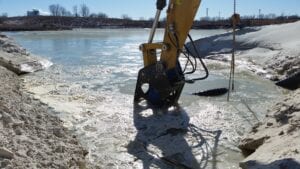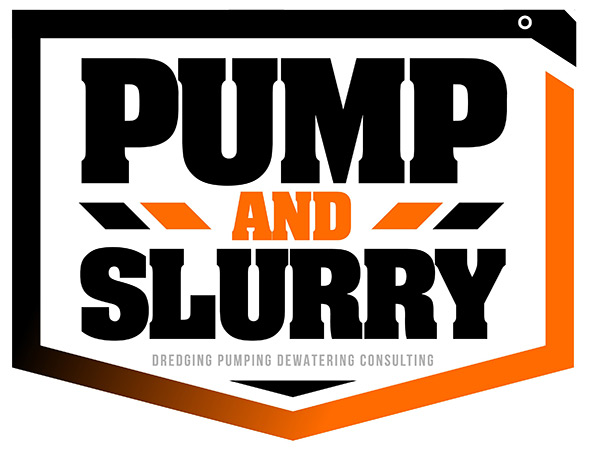Criteria For Selecting Dredging Technique
There is no such thing as a standard dredging project. Each project requires its own unique approach
Consulting Services |
Dredging Techniques
A variety of dredging techniques have been developed over the years. When preparing for dredging activities, a decision must be made of which dredging technique is best suited to the activities in question.
When doing so, the following factors must be taken into consideration:
- Composition of dredged materials
- Type and level of pollution
- Specific circumstances
- Size of project
- Acceptable opacification and spillage
- Required accuracy
- Side-effects
- Ecological considerations

GET STARTED
Contact us about dredge engineering, equipment, pumping, and dewatering to
meet your contract
requirements.
Composition of dredged materials
The choice of dredging technique is also determined by the physical composition of the materials that must be dredged. For instance, different techniques must be used when dredging soft silt than when dredging sand or clay.
Type and level of pollution
Another factor which determines the choice of dredging technique is the presence of gross solids, like household and construction waste. Gross solids on the water bottom can reduce the effectiveness of certain dredging techniques.
The level of pollution on the water bottom is generally not a decisive factor when deciding which dredging technique is going to be used. However, special dredging equipment has been developed to, for example, reduce unwanted dispersion and opacification during dredging activities. This equipment can be damaged by gross solids on the water bottom and cannot be used in all circumstances. The quality of (or level of pollution in) dredged materials determines whether materials can be placed at the water’s edge or needs to be transported.
Specific circumstances
The choice of dredging technique is primarily determined by the accessibility, water depth, current speed and dimensions of the waterway in question.
In urban areas, physical objects like lamp posts and parked cars are major obstacles for equipment operated from the banks of the waterway. This also applies to the width of waterways or the height of bridges when floating equipment is used.
Size of project
It may be necessary to dredge large stretches of water bottom when performing new infrastructure work, extracting sand and maintaining waterways. Project size is often expressed as “m3 in situ”. This refers to the volume of dredged material that must be removed. In addition, the surface area across which materials are spread, thus the layer thickness, also determines the capacity and cost of the technique chosen.
Acceptable opacification and spillage
Materials are removed under water during the dredging process. Material released by a dredging technique, which is not subsequently disposed of via the transport system, is referred to as ‘spillage’. Spillage is often manifested via a loose top layer, possibly featuring chunks of sediment. Spillage also results in a loose top layer when suspended particles (opacification) are subject to sedimentation.
However, polluted spillage is often encountered when dredging polluted water bottoms, which means it determines the chemical quality of the water bottom and the surface water.
Accuracy
There are two facets to the accuracy of a dredging technique. On the one hand, it involves the accuracy with which dredging takes place and, on the other hand, how accurately these newly dredged areas match the required profile. Accuracy is a criterion that can be clearly measured and checked. In general, it is assumed that opacification and spillage can be minimized if strict accuracy related benchmarks are implemented.
Side-effects
In general, it is impossible to avoid unintentional effects of dredging activities, like opacification in the water column. However, contractors can take measures to reduce such effects, which includes installing silt screens. Other unintentional effects, like destruction of tow paths and noise-related nuisance, cause techniques with such side-effects to be avoided when working in vulnerable (natural) areas. These techniques will only be used if there are no viable alternatives, although the environment must be given maximum priority at all times.
Ecological considerations
There is an inter-woven relationship between ecology and dredging. Legislation relating to plants and wildlife imposes additional restrictions on available methods and available periods of the year. Therefore, ecological considerations must always be taken into account when performing dredging activities.
Several dredging techniques or a combination of them may be suitable to successfully complete certain projects. That is why specifications often do not prescribe one particular technique, but only identify boundary conditions or the required end result.
One statement is extremely important when it comes to small-scale dredging activities:
“There is no such thing as a standard dredging project.
Each project requires its own unique approach.”
Commonly used dredging techniques
- Hydraulic Excavator Dredger
- Work carried out from the water’s edge
- work carried out from a pontoon featuring anchors or spud poles.
- Silt push boats
- The silt pushers pulls itself using a winch system and uses the dozer blade to push silt towards a
collection point. This often involves an excavator being placed at a strategic location on the bank or
pontoon, and using it to transfer silt from the water into the means of transport.
- The silt pushers pulls itself using a winch system and uses the dozer blade to push silt towards a
- Cutter suction dredger
- The cutter features a suction opening that has been connected to a dredging pump. The cutter cuts away the soil and mixes it with water. The mixture is then pumped to a (drainage) depot or processing installation via a discharge pipe. Cutter suction dredgers permit a very high degree of accuracy.
- Dredge pump
- Dredge pumps are used to suck dredging materials from the water bottom. The pump’s suction opening, which is sometimes extended using a suction pipe, is guided through the center of ditches to maximize contact with dredged materials. However, dredge pumps can be mounted to a tractor or crane, or can also be placed on a boat. The production capacity of a dredging pump is determined by the dimensions of the pump and the capacity of the carrying vehicle.
Transport of Dredged Materials
The second step involves transporting dredged materials to storage and/or processing site, and can be divided into two main categories, namely continuous transport and discontinuous transport.
During discontinuous transport, dredged materials are transported in batches – as in mechanical dredging. A silt push boat pushes a certain quantity of materials towards an excavator. The excavator then transfers it (bucket by bucket) to the means of transport (tipping truck or barge), which then transports the load to a disposal site (possibly via one or several transfer points).
Continuous transport refers to techniques where dredged materials are transported without interruption, via pipeline or hose. For instance, this is the case in hydraulic dredging: silt is mixed and pumped via a pipeline. During transport via pipelines, the discharge pipe normally connects the dredging site directly to the processing site, through the dredger. Depending on the distance between the sites one or more booster stations might be needed. This type of transport is normally only used when implementing cutter suction dredgers or dredging pumps.
Storage of Dredged Materials
The third step involves storing the dredged material at a dredging depot, temporarily or permanently. Some depots are located in surface water (e.g. former sand excavation pits) while others are located on land.
A more stable product can be created by draining dredged materials, which can then be used for a variety of applications. Draining the removed materials allows the structure and volume of the materials to be improved. Because organic compounds break down over time, the quality of dredged materials can also improve if it is kept for long periods.
GET STARTED
Contact us about dredging consulting, equipment, pumping and dewatering to meet your contract requirements.




